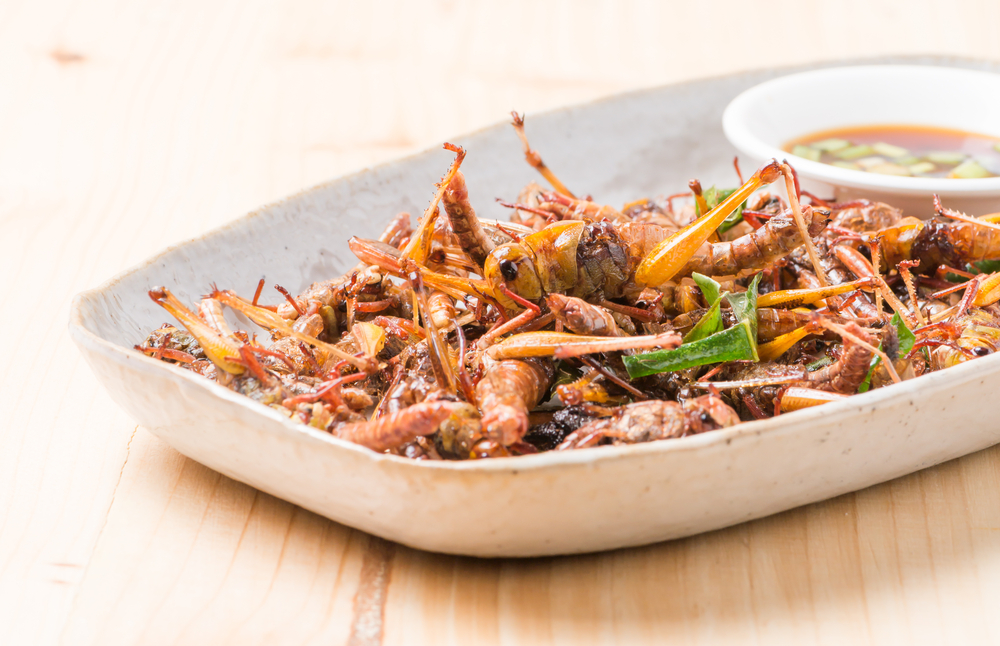
“Please pass the crickets” would be an anomalous grouping of words during the usual American family meal. Most people in America also won’t be giving their sweetheart a tin of chocolate coated ants for Valentine’s Day.
Entomophagy, or insect eating, is still a novel idea to most American nationals. Our culture just hasn’t introduced bugs to our palate and most of our general public has a deeply-ingrained repulsion to eating bugs, often associating it with insanity or only something you would do on a dare with money at stake. Perhaps Fear Factor would have eliminated bugs as something gross to eat in other cultures!
Very slowly, a few adventurous individuals in the U.S. recognize bugs as nourishment instead of scurrying, crawling, slinking pests. In fact, scientists have identified at least 1,700 edible insects. Ants, certain types of worms and grubs, beetles and even cockroaches are delicacies in other countries and are safe to consume.
Eating bugs is familiar to the countries of Thailand, China, Ghana, Mexico, Japan, Australia and The Netherlands. Of all the bug-eating countries, The Netherlands is the new-comer, with treats such as chocolate infused with mealworms. The Japanese have eaten bugs for centuries, with the rural people depending on them for sustenance during tough economic and agricultural times. On their modern menus, you may find boiled wasp larva, fried silk moth pupae and fried grasshoppers.
Australians are more squeamish than the Japanese for the most part, but their aboriginal people eat insects for their protein. And bugs are a good source of protein indeed! Scientists have found that a 6 ounce serving of crickets contains about as much protein as an equivalent amount of beef, 60 % less saturated fat, and twice the B12!
Brazilians in the small town of Silveiras love to dine on winged queen ants, which they declare taste much like mint, and even include as images on their works of art. Chinese eat scorpions in liquor and various critters in their larval state. Surprisingly, snacks like roasted bee larvae and friend silkworm moth larvae are rich in micronutrients copper, iron riboflavin, thiamin and zinc. Fried crickets are very common to find at roadside carts in Thailand. These crispy critters are as easy to find as the famous Thai noodle carts along the sidewalks in Bangkok.
Our western palate will not likely accept bugs as a common food any time soon, but this alternative form of protein may gain more popularity with eco-conscious people here in the U.S. for a few reasons. For one, raising bugs requires much less land than cattle, they are minus the methane emission of livestock, and they require very little food and water. Any run off from insect farms that are run properly will also not contaminate local water supplies. For the health and environmental benefits, experts at the U.N. Food and Agriculture Organization suggest that we at least give bugs a try.
Want to fill your plate with something out of the norm? I prepare alternative types of cuisine upon request, so if you are interested in trying a dish of organic fried crickets, you only need to ask! Contact me at 520.971.8422 or by email at maggie@tucsonchefmaggie.com

